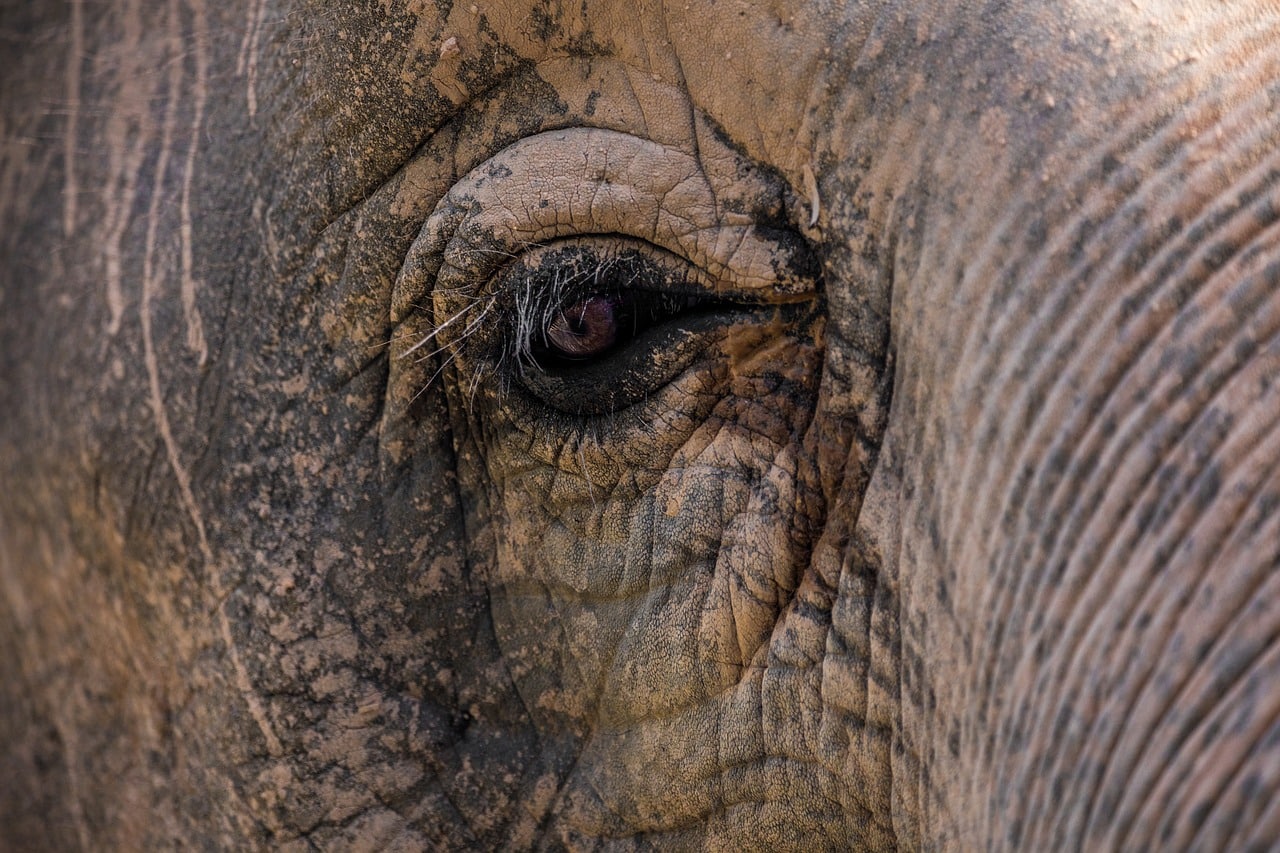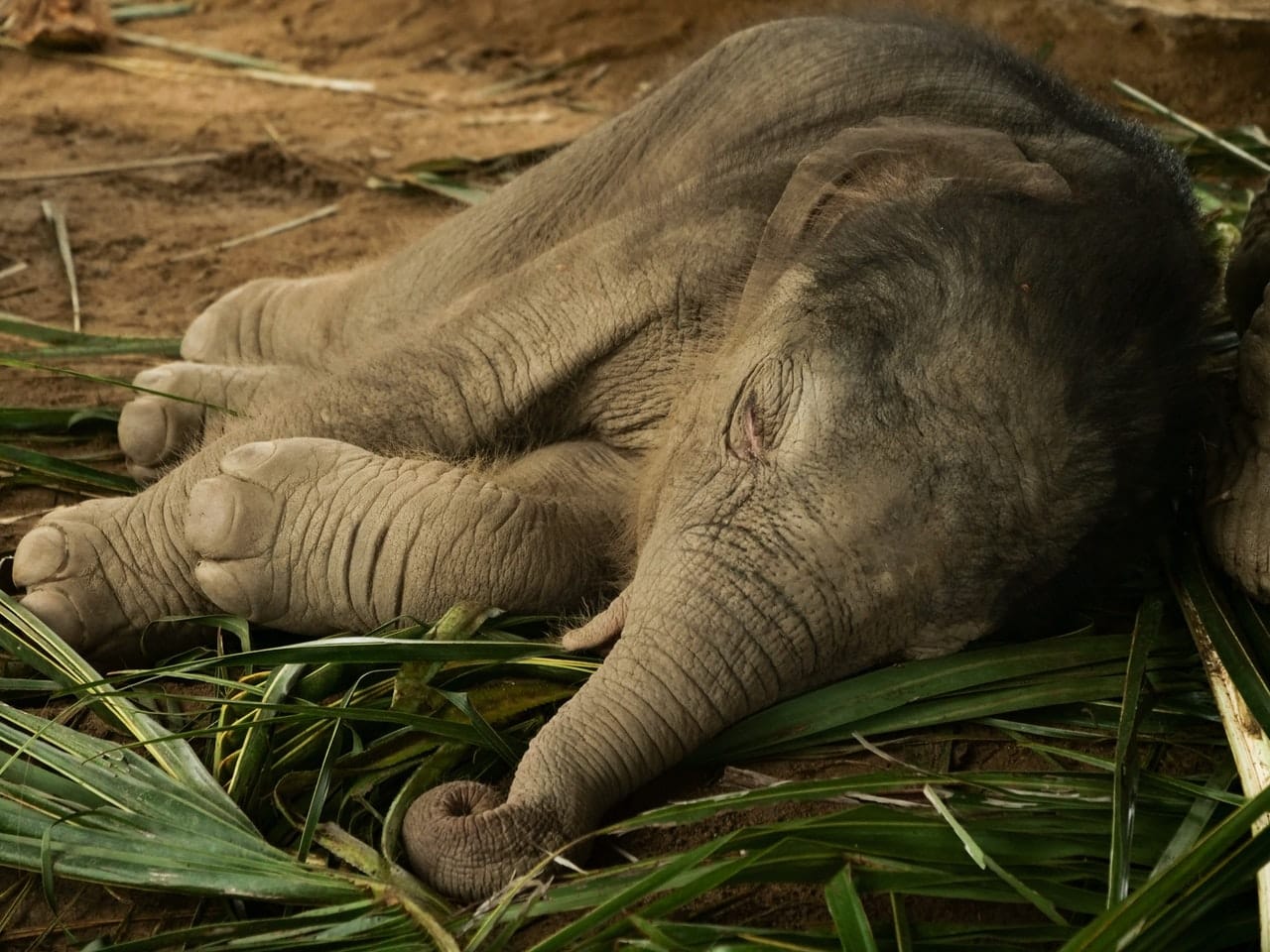Why, Where and How to Help Them

Table of Contents
Planning on your trip to Asia and thinking about helping elephants in Thailand? Read on!
Calm eyes, firm posture, gentle movements and serene wisdom in their gaze. They are biggest land mammals on the earth and yet, how vulnerable they can become. So much attention they have and yet, there is so much care they still need. The Elephants.
Once you touch their pleasantly rough skin, you want to embrace them. The more time you spend with them and observe them, the more you understand why there are so many people who protect them and rescue them from those humans who misuse these incredibly intelligent, joyful but shy animal beings.
Planning on traveling to Thailand? Get our Thailand Travel Guide
In 2019 nearly 40 million tourists crossed the Thai border. The same year Bangkok was reported as the most visited city in the world (22.78 million tourists). The statistics look great from the business point of view. Tourist agencies have been growing at light speed over the last few years in Thailand.
They compete fiercely with each other to offer the best deal and to attract foreigners with the most popular national highlights: massages, beaches and elephant rides. It is hard to imagine a person who has been to Thailand and has not experienced at least one of the mentioned ‘attractions’. Regarding the last one, rides on elephants are still in big demand all throughout the country.
Elephants in Thailand: why, where and how to help them
It is quite difficult to estimate the exact number, but more sources agree there are around 3500 Asian elephants left in Thailand. More than half of them are in captivity and used for business purposes. In the last century there were about 100.000 of them and when you consider current statistics, the situation of elephant extinction is more than alarming. The infamous elephant industry obviously does not help the whole situation at all.
Unfortunately, while picking an elephant camp for your holiday, you can run into an organisation that will tell you they breed and captivate elephants at their facility to ‘save them from extinction’. They will not even hide the most terrible methods to tame them and on the top of that they will assure you that the ways they treat the animals are normal and even necessary. Please, follow your own common sense and do not take these people at their word.

The majority of tourists are not knowledgeable about the distressing exploitation that happens to the elephants they enjoy rides on, and they often don’t wonder how it’s possible that an elephant plays soccer, paints a canvas, plays a musical instrument or pushes insanely heavy logs in the elephant shows.
It’s possible to train elephants to play soccer in 3-4 days. Can you imagine a human being to be able to do the same in such a short time? Hard, right? And not all of us are into sports. Now imagine how much severe training and torture an elephant has to live through to learn new tasks fast, to be obedient to the mahout (a person who trains and rides an elephant) and to not ‘disappoint’ him in bringing in thousands of tourists.
Silent tears
When you pay for your ticket to an elephant park, nobody will tell you how they have broken the spirit of the elephant just to make him/her submissive so you can ride it through a forest and take a selfie on the elephant’s back.
Nobody will tell you that to do that the animal was probably stolen from his family when he was just 2-3 years old, that his parents were killed when they wanted to protect the baby, and he was given anesthetics so he would not defend himself. Nobody will mention that later on they tied the body of the elephant to the trees from both sides, chain the feet and hit it with a takaw (bullhook used for commanding the animals).
Nobody will ever tell you that the elephant you are riding had been subjected to severe sleep deprivation and starvation just to become a slave to his owner. And nobody will show you the wounds on his skin that is not that thick as people in riding camps will tell you (in some parts the skin can bleed from the bite of insect).
Nobody will point at the blind eyes these animals have from the sharp lights on the street or in the circus. Sadly, this is the truth.

If you want to have an idea in which conditions the captivated elephants live, have a look at these touching photos from Bren Lewin.
You as a traveler or just a person who cares about animal freedom can take action too, by following these very simple steps:
- Ignore elephant riding tours.
- Do not support begging elephants on the streets by buying food for them or paying to take pictures with them.
- Donate.
- Spread the word about points 1,2,3 and 4.

Join one of the local tours in Thailand:
Bring the Elephant Home Foundation
There are plenty of opportunities where you can get hands-on with rescued elephants, and one of them is to support Bring the Elephant Home (BTEH) project that promotes natural behaviour of elephants and re-creates their natural habitat.
For now, the foundation is working hard to establish a community based education centre in a human elephant conflict area in Kanchanaburi, a province in Western Thailand, with the help of local village communities who are already participating vigorously on the project of BTEH.
Apart from educating students and locals, the BTEH liberated two street elephants from begging and documented the whole process in their book.
They have organised running and biking tours to raise money for the centre. They have also been successful with their project Trees for Elephants.
For more information about all the activities and possibilities to help them, please visit their homepage.

Read more tips about traveling in Thailand:
Help the Gentle Giants
Although feeding and bathing elephants at sanctuaries and parks creates memorable experiences, you can do much more to make their lives more pleasant and safe. While volunteering and documenting the project of BTEH, we witnessed how many things need to be done to make the elephants’ lives comfortable and how everything in nature is connected.
So what are the actions the foundation is working on?
Making the Firebreaks
This is one of the crucial things to protect a forest from fire in the dry season. A firebreak is a 4 m wide vegetation gap, a border in the forest that you create by clearing it of weeds, branches and dry grass. Then, in case a fire bursts out, it stops or slows down at this border so the people from the villages have time to reach the forest and extinguish the fire.

This activity demands good physical condition and some protection, too. All of us wore gloves and a facemask. To make the firebreak we used hoes, rakes, brooms, spades, bamboo sticks and an air blower pipe. It was hard yet effective work.
All you need to know before making your way to Thailand in our comprehensive Thailand Travel Guide
Building the Rock Check Dams

Dry season is tough, and not only for us people. When the rivers dry, the places where elephants come to refresh and drink disappear. To help them to cope with the heat and dryness, we made two dams. We created a wall about half meter wide on the river, made of a metal fence, into which we put stones and rocks.
Making Salt Lick Ponds
The quality of the deciduous bamboo forest, the natural habitat of elephants, is dropping. Thus, the important nutrition the animals need is being reduced, too. By making salt lick ponds, you supply the elephants with necessary minerals. We made two of them by digging deposits where we mixed salt and other minerals with soil.
We did not water the mass so that the minerals could stay on the surface longer and also, so that the soil doesn’t absorb them too deeply. This lets elephants be able to reach them more easily.
Helping with Seed Germination and Potting Seedlings
Another issue that goes hand in hand with frequent fires and deforestation is the enormous shortage of greenery. Elephants are pure vegetarians and eat over two hundreds of different species of plants and trees.
Luckily there are special organisations and local communities who take action and plant new trees regularly. They collect the seeds for germination and later on, they pot seedlings, which we had the chance to do at the local community tree nursery in Baan Klang Pla Kod.

All these activities were done within three days, and the effort of the children and their teachers was unbelievably profound. It was a big pleasure to meet Kerry Dyke, the project’s main coordinator who brings international schools together with Bring the Elephant Home foundation. Kerry is a man with an awesome, eco-caring personality and a ton of contagious, positive hyperactivity. He is involved in several ecology protecting projects; click here to read more about his current projects.
Another important thing to mention is, that one of the most valuable parts of these kind of events are the discussions between the students and the leaders of the project about elephant welfare and conservation. Apart from physical work and joy with the elephants, the students are going to make presentations about what they have learned, and also to present their knowledge on a future conference for schools in Bangkok next year.
During three days, so many trees were planted, much of the forest has been saved, and more water and nutrition was provided to the mammals. We sincerely wish for more elephants to find their homes again.
Thanks to Antoinette van de Water, Tik, and the staff and volunteers of Erawan Elephant Paradise for giving us an opportunity to get a deeper insight into the elephants’ lives. Thank you to Kerry Dyke and all the children for having a great time!
Please, if you feel compelled to support the Bring the Elephant Home project, click here to learn more about your options how to help elephants in Thailand. They have been doing a great job, have greatly helped others in their efforts, and now they need our help to kick off their dream!
Pack & travel:

